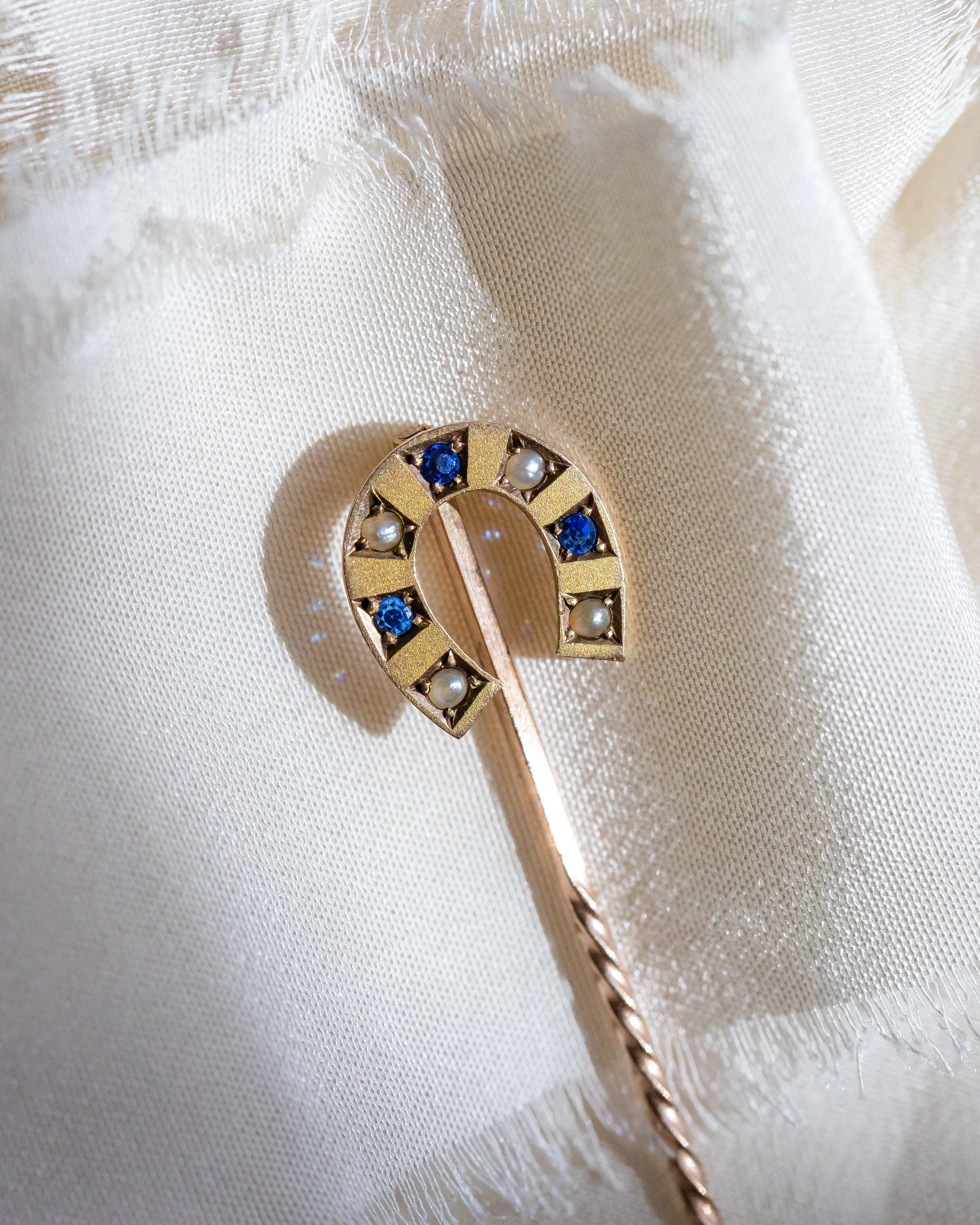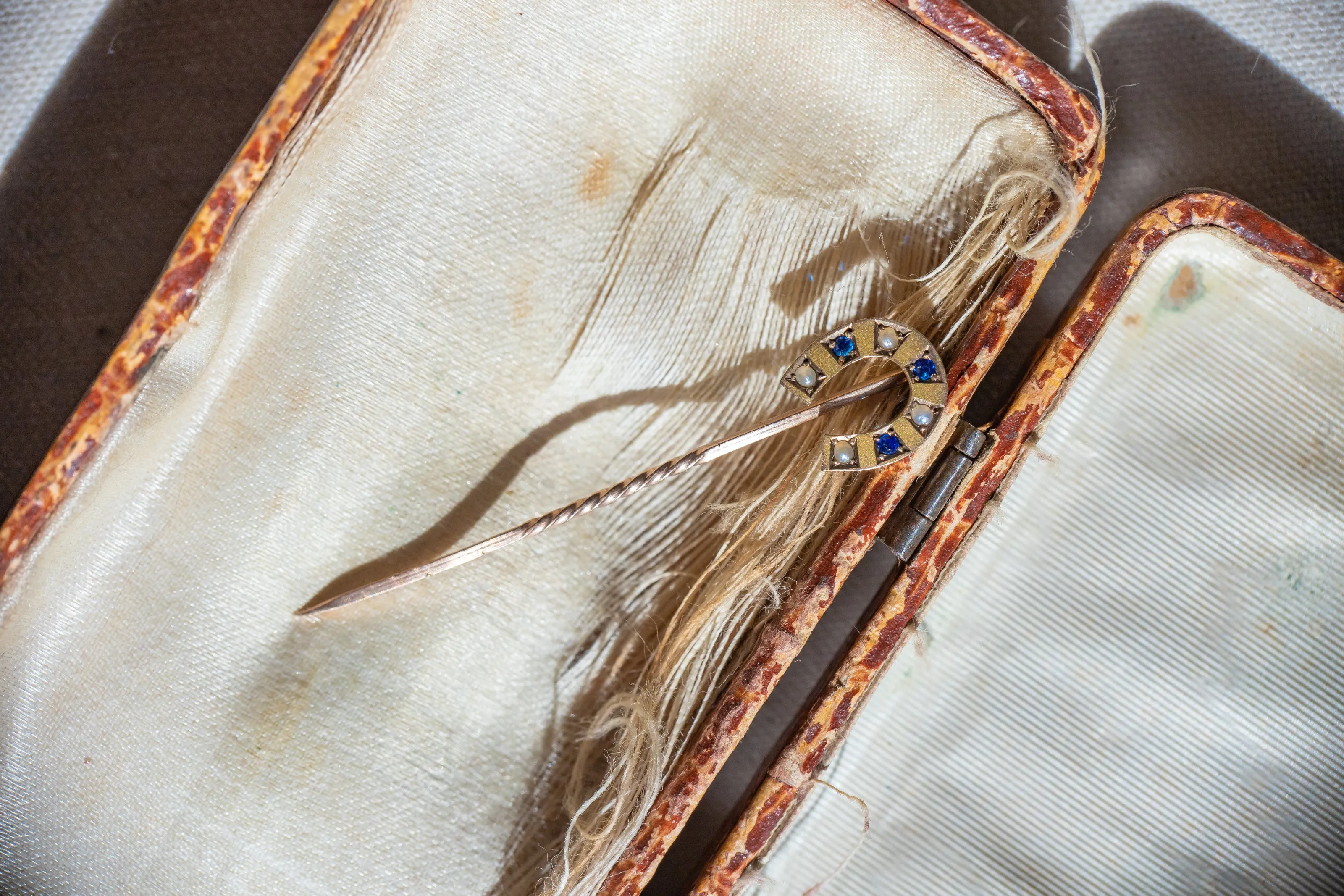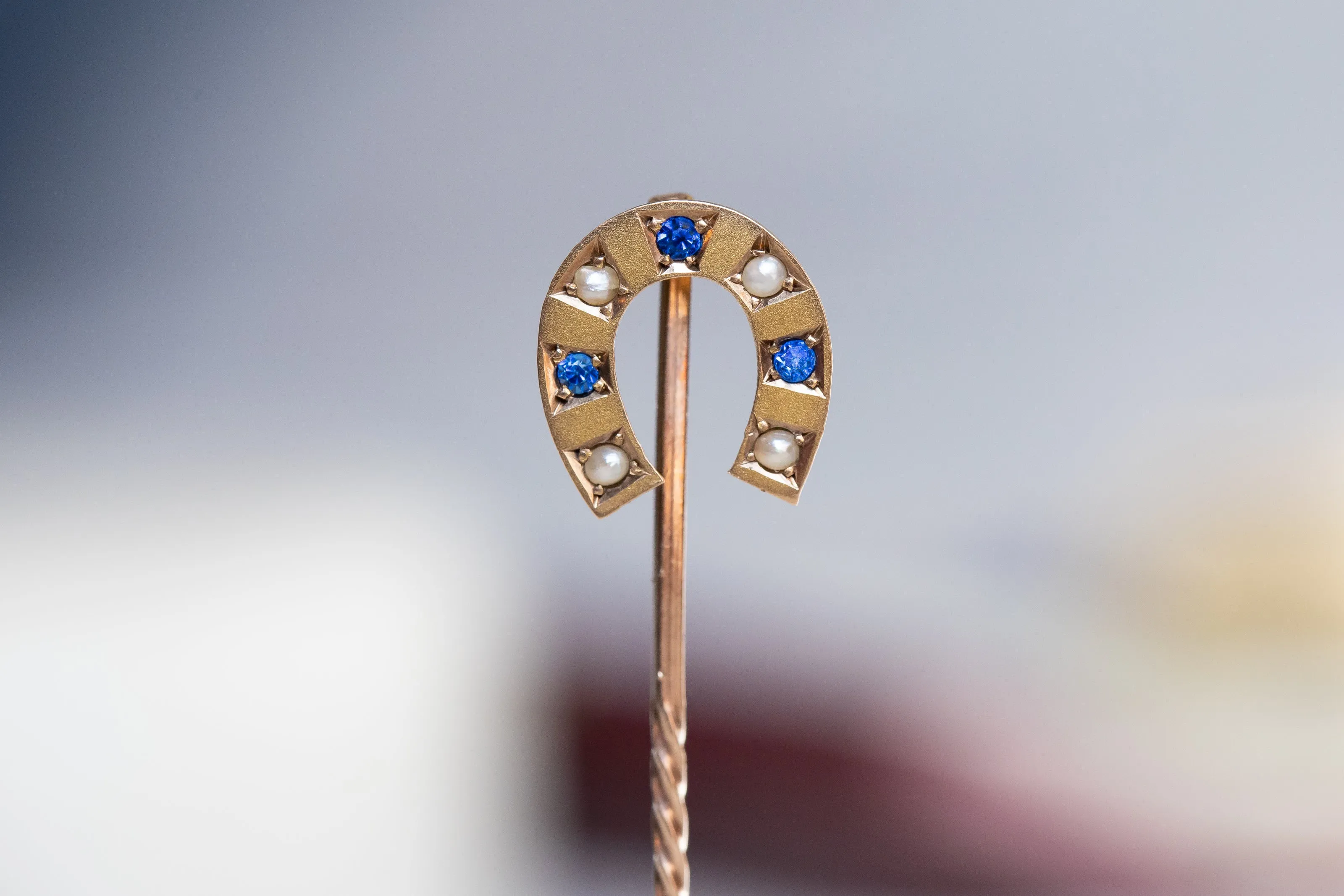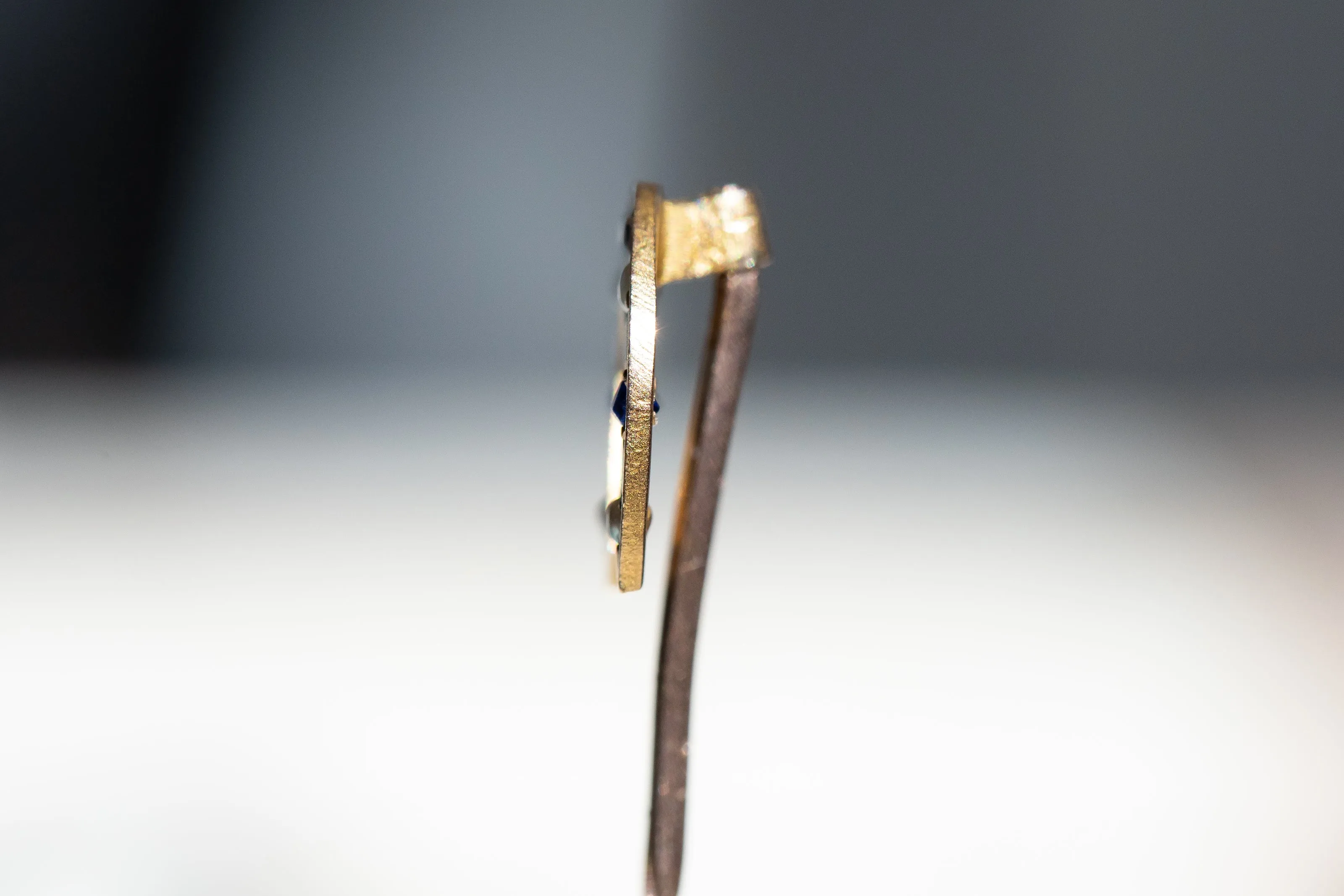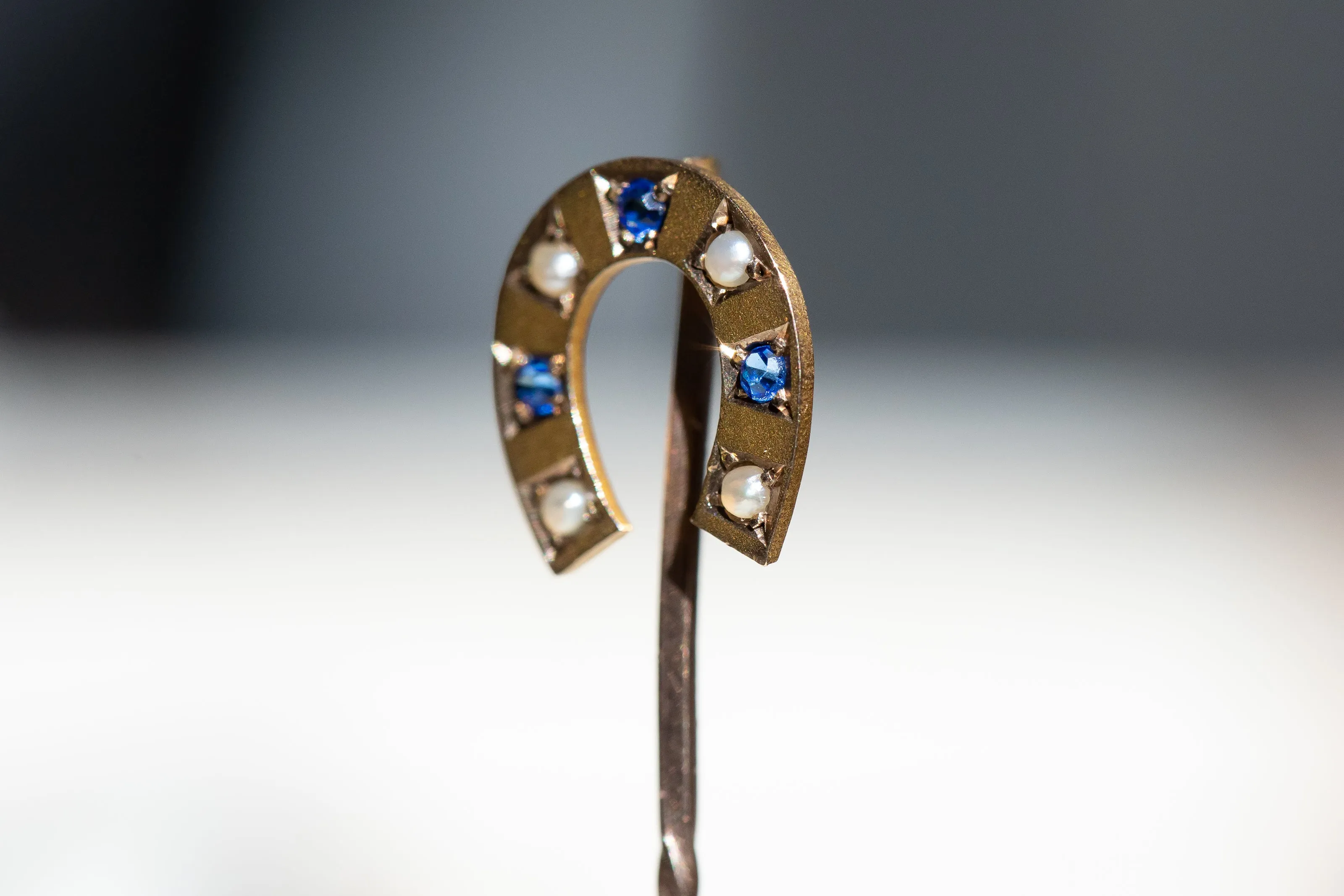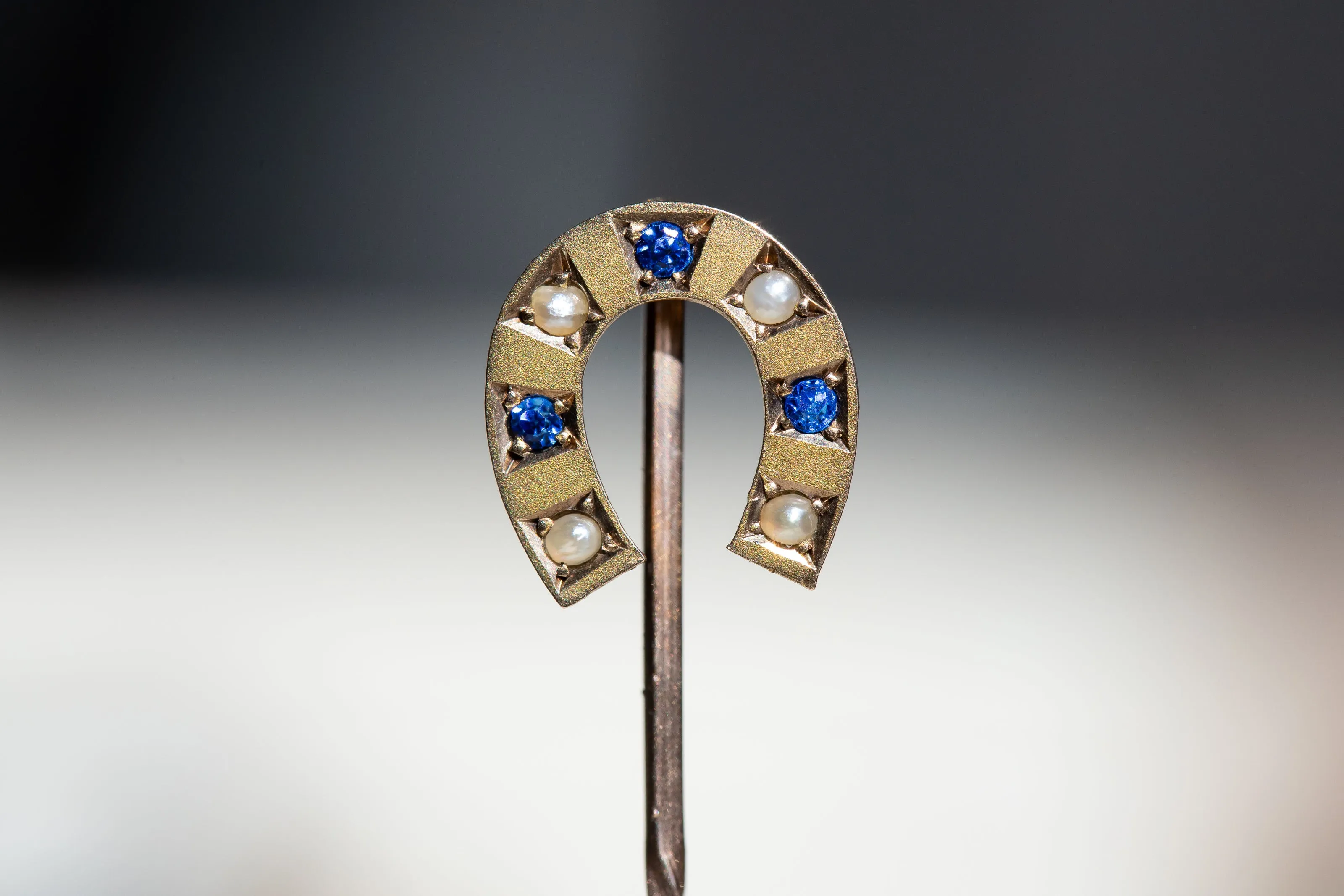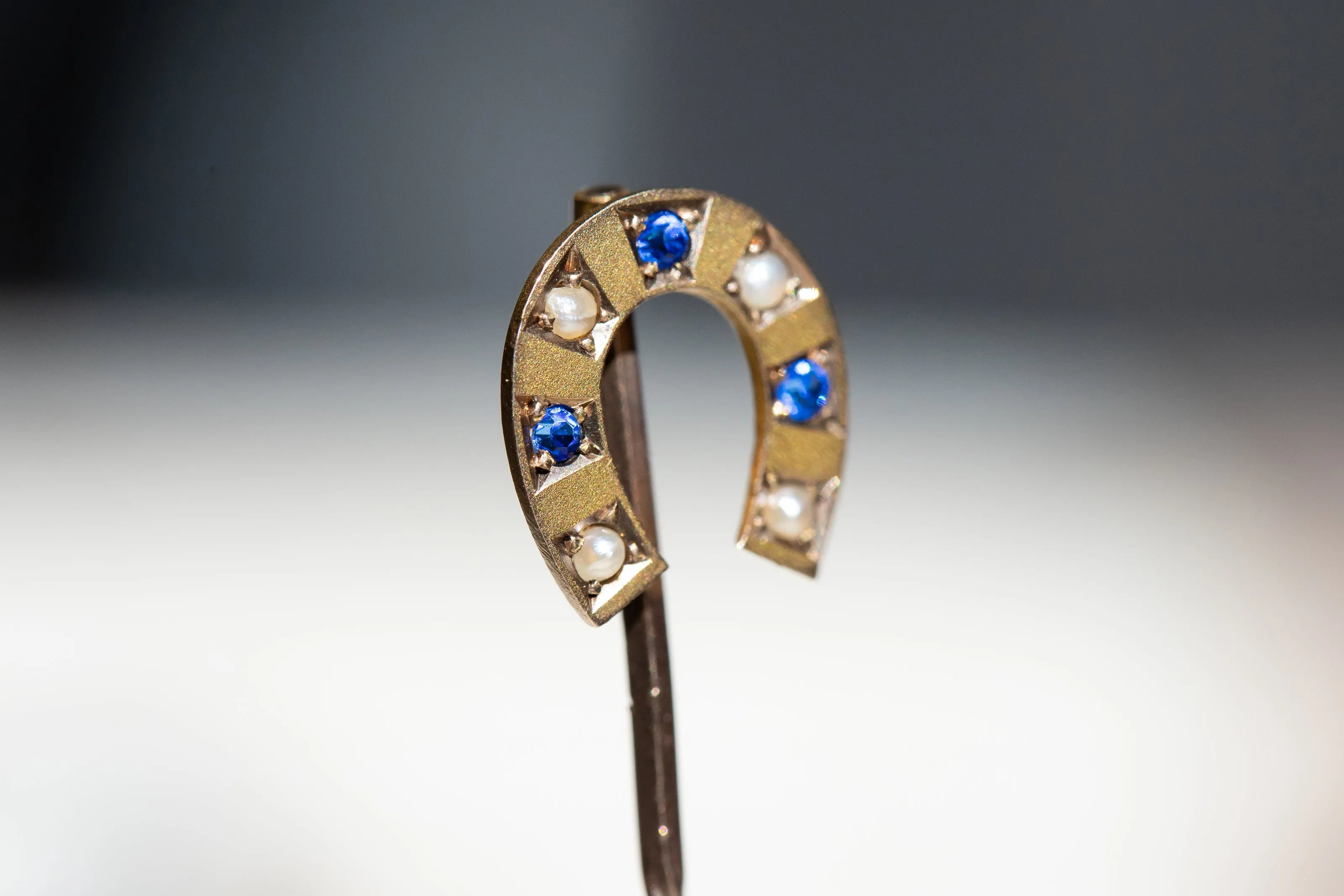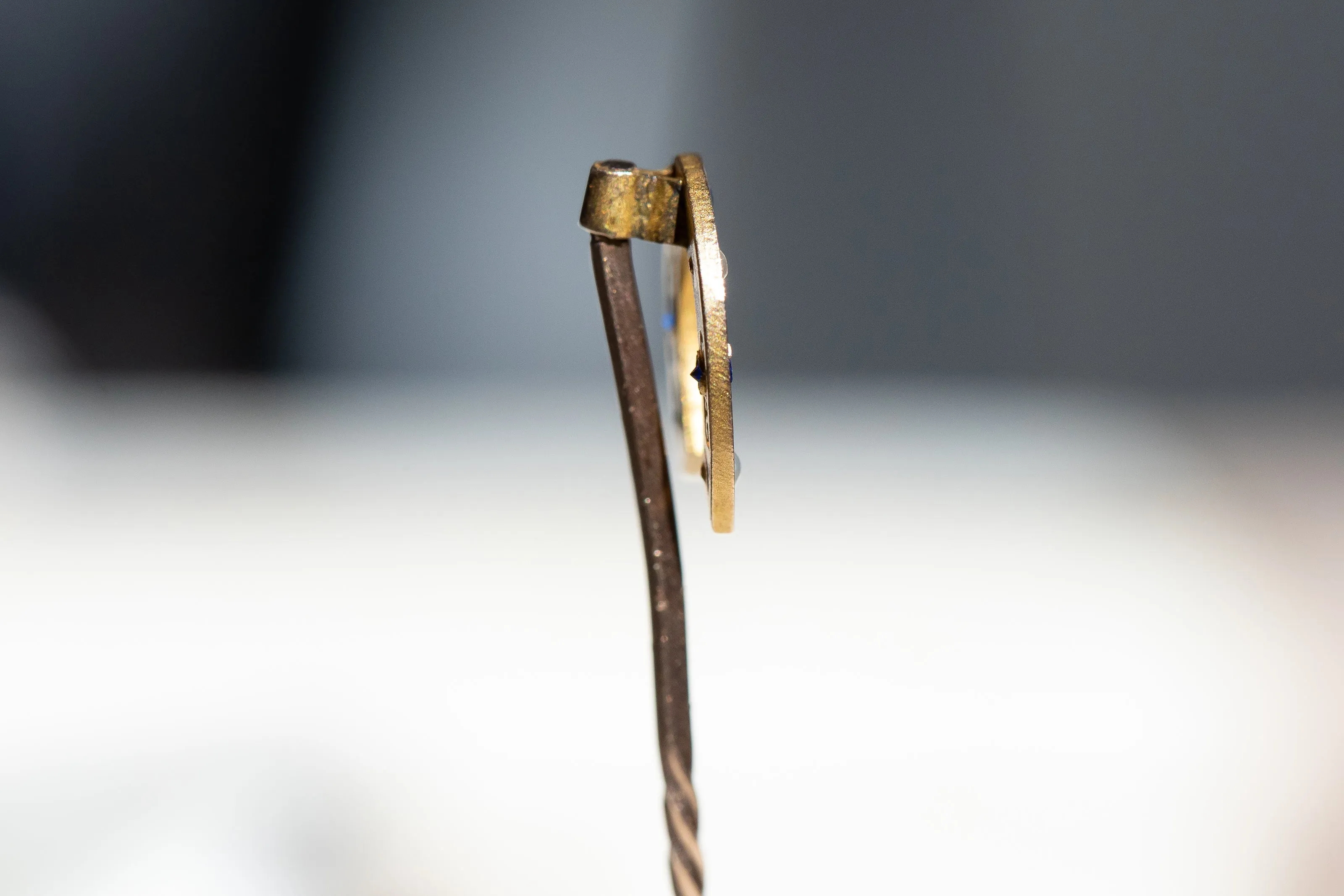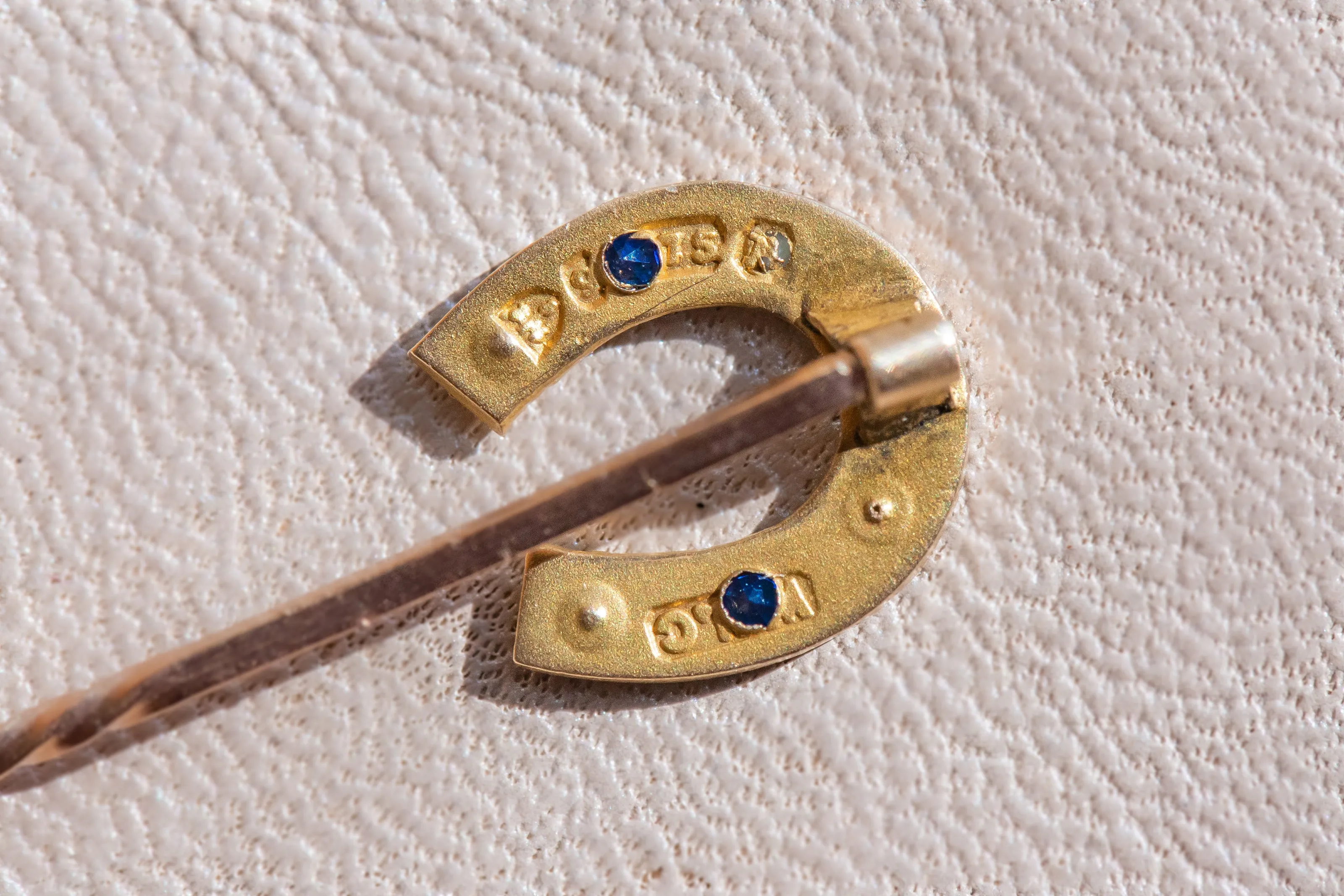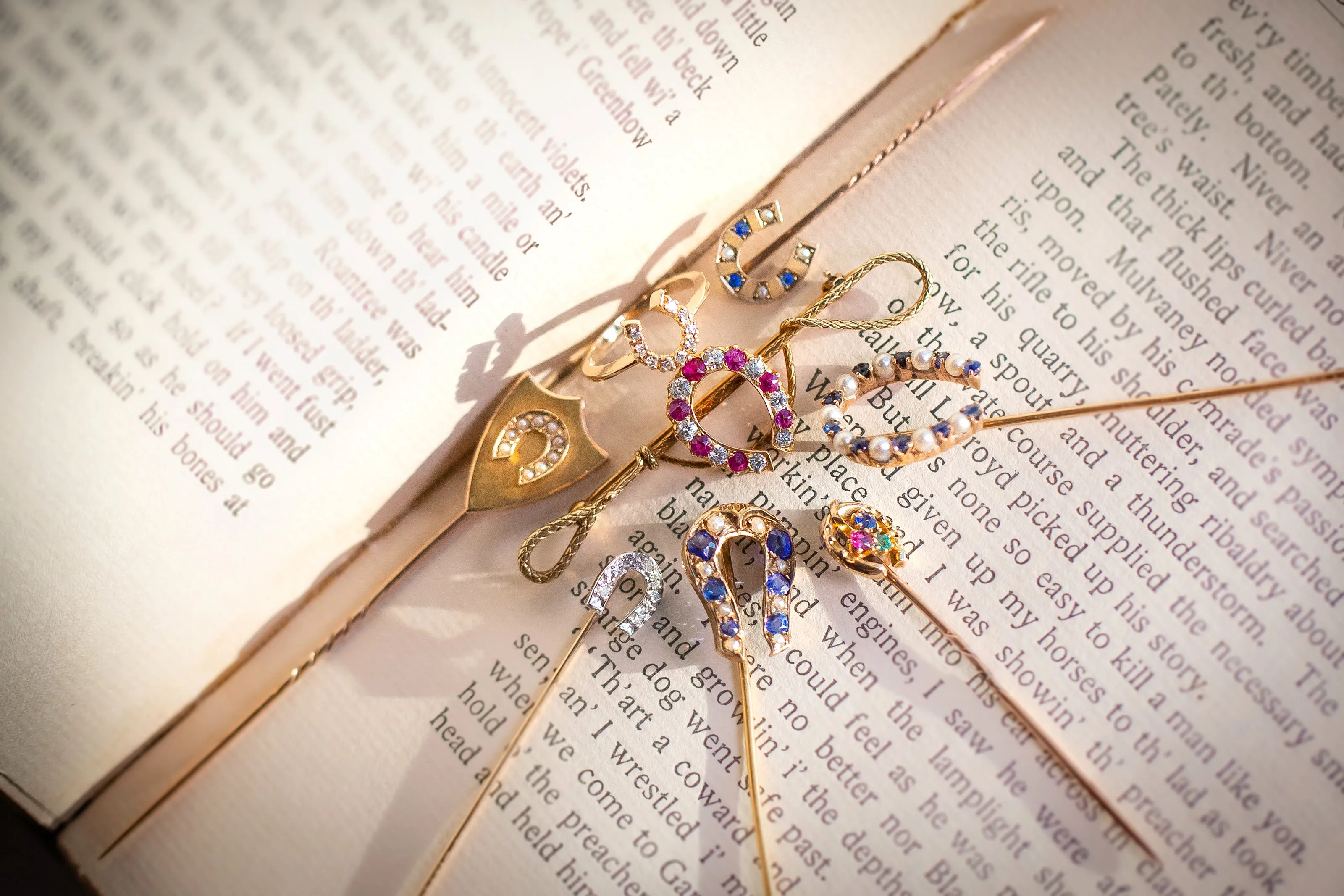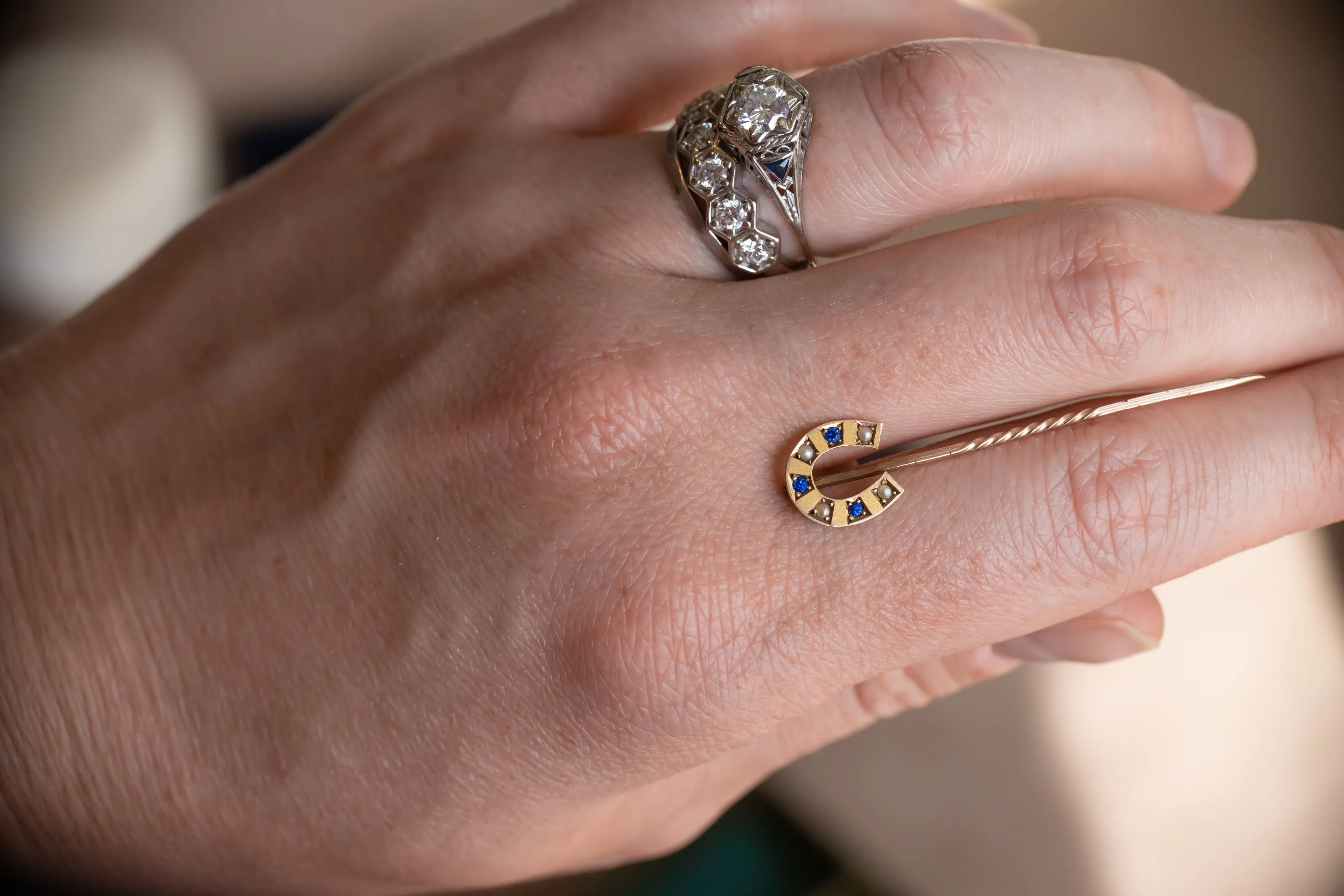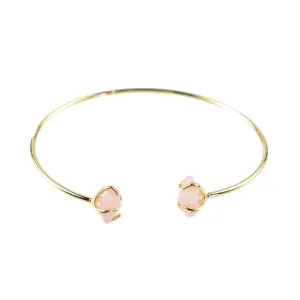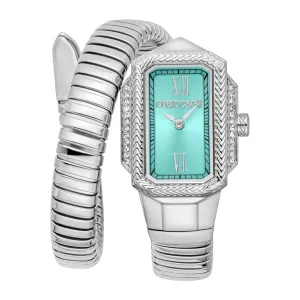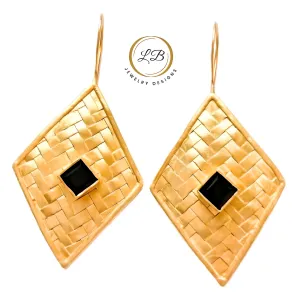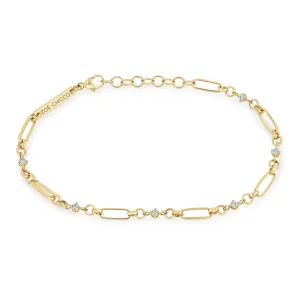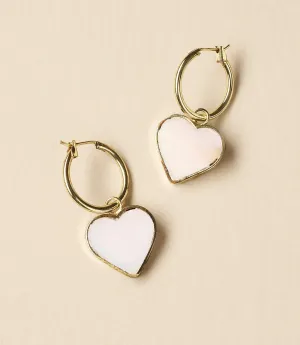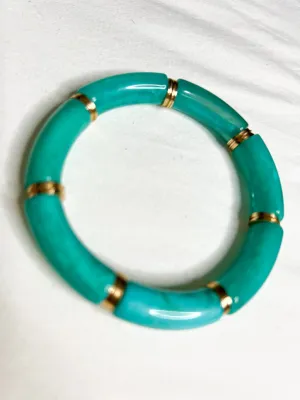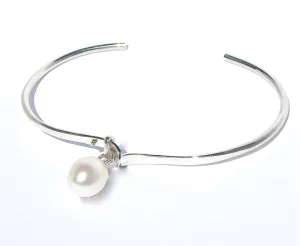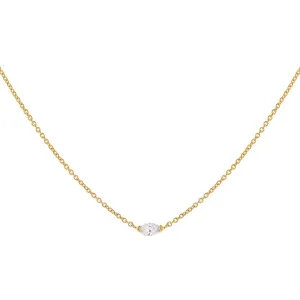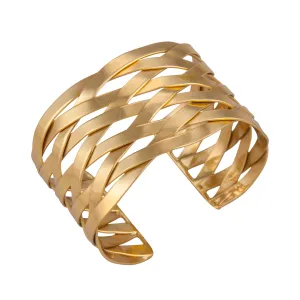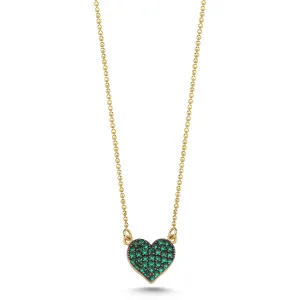General Information:
- Total Carat Weight: 0.075 ctw
- Precious Metal Weight: 0.55 dwt
- Precious Metal Material: 9k yellow gold horseshoe head and 9k-10k rosy, patinaed gold stem
- Dimensions: 48.11 mm overall length; head is 10.63 mm long x 9.91 mm wide x 1.25 mm deep excluding the stem to the reverse.
- Weight: 0.86 grams
- Markings: The reverse of the horseshoe head is fully hallmarked with the UK assay marks: the Chester assay office pictorial crest, followed by a "9" and "375", defining the 9 karat/37.5% gold content of the horseshoe. Next, a date letter mark that is believed to be a serif letter "N" or "R". An "N" would indicate the year 1876, while an "R" would indicate the year 1900. Last, there is a maker's mark, and it appears to have been somewhat obscured by the gemstone settings, reading as "W.[?].C.", the middle initial is believed to be a "W", which would reveal the maker as William Walter Cashmore.
- Era: The hallmarks to the reverse of this stick pin indicate an estimated date of 1876, which certainly aligns with the style, construction and make of this pin.
- Buyer Notes: Collectible, sizable and versatile, this pin is rich in symbolism and style, a relic of history and lore. Jewels marked with the Chester assay office are highly sought after, as pieces bearing such a mark are far rarer because the office closed in the mid 20th century. Please kindly note that though seemingly sturdy where it is affixed to the horseshoe head, the stem does wiggle if "pushed and pulled" with the finger. We have opted to sell the pin as-is despite this imperfection, as it may be very easily and economically rectified by the buyer post-purchase, or the pin may be reimagined as a ring, charm or pendant rendering the stem unnecessary anyway. This pin does not come with a clutch.
Specifications:
- Center Stone Type: Pearl
- Center Stone Count: Four (4)
- Center Stone Carat Weight: 0.036 ctw/0.009 ct each; calculated by formula per the specific gravity of pearl
- Center Stone Dimensions: 1.10 x 1.15 mm on average, as measured within mounting
- Center Stone Shape: Split/halved seed pearls
- Center Stone Color: Cream with warm undertone
- Center Stone Clarity: Good luster
- Side Stone Type: Sapphire Simulant (Paste)
- Side Stone Count: Three (3)
- Side Stone Carat Weight: 0.039 ctw/0.013 ct each; calculated by formula per the specific gravity of paste glass
- Side Stone Dimensions: 1.35 x 1.40 mm on average, as measured within mounting
- Side Stone Shape: Round Faceted Cut
- Side Stone Color: Akin to ceylon blue in color
- Side Stone Clarity: Vivid and semi-translucent
The Story:
A sweet talisman for luck and blessings, this late Victorian stick pin dates to the mid to late 1870s, and boasts seven total gemstones mounted within a bloomed gold horseshoe-shaped frame. Simulated ceylon sapphires (paste) and small seed pearls offer a punctuated effect of bright color against the backdrop of buttery, textural gold. The duo of sapphires and pearls is a quintessentially Victorian one.
Enhancing this pin's appearance is its bloomed gold finish. Blooming is a finishing technique applied to fine jewelry with its origins purported to be in 1853, and its popularity highest between the 1870s and 1890s. In the blooming process, the gold piece is dipped within a mix of muriatic acid, potassium nitrate, salt and water, causing the alloyed components of the gold compound to delicately burn away, leaving a very fine surface layer of pure (24k purity) karat gold. The burning procedure leaves micro-pitting in the surface of the piece, giving it its identifiably soft, subtle textural appearance. The texture achieved is an exceptionally bright, golden and matte quality, as pictured.
The blooming process evidences why the stone settings seemed to have been punched after the hallmarks were stamped into the back of the horseshoe: the use of acids required that the stones and their settings be added to the piece after the blooming process was complete so as to keep the interior of the settings unbloomed and so as not to harm the gems. As such, the gold horseshoe form was made first, hallmarked second, bloomed third and punched/gem-set fourth. While seemingly an unusual order of operations, one must remember that this piece was made during a very, very early iteration of production en masse, and imperfection was not uncommon.
The horseshoe motif has long been popular as a symbol of both fortune and protection, two themes that have influenced jewelry for thousands of years. During the Victorian period, novelty and sporting jewelry grew to popularity as early as the first quarter of the 19th century, and by the 1870s, they were a dominant favorite by ladies and gentleman consumers alike. Horseshoes were meant to allude to the support of equestrian sports just as much as they conveyed good fortune, leaning most often toward the latter as the Victorian era drew to a close.
It is believed that the horseshoe can both gather and bestow luck; when worn ‘U’-shape up, the talisman catches good fortune for its wearer, and when worn ‘U’-shape down, it is thought to bless others with luck and protection, both friends and strangers alike. The emblem is not relevant solely to equestrians, as its illustrative meaning benefits all with favor and good will. Horseshoe jewelry was typically gifted as a celebratory gesture, intended as a blessing over the recipient.
The Victorians are heralded for their deep and wide-ranging symbolic associations evoked through jewelry. Every element, gemstone, design choice and motif carried with it a wealth of symbolism, and this stick pin is no exception: sapphires represent divine wisdom and holiness, as well as royal status and fortified intuition, while sapphires represent purity, holiness and new beginnings.

